A Passage to the Philippines – Day 3: Manila Extramuros
Today was so rainy that I only realised mid-afternoon that my sunglasses were useless. The surface had been destroyed by yesterday’s rain showers, which blurred the view by wearing down the polarised coating in uneven patches. Luckily, I found a big mall during my wanderings through the centre of Manila and bought new sunglasses there. Taking a gamble, I decided to pay for them in cash, as I am almost halfway through the trip and I have not spent anywhere close to half of the quantity I exchanged. Still, I do feel a bit nervous that I might run out of cash in the middle of nowhere at the most inconvenient time.
I left my
hotel at half past six in the morning to catch the flight from Tagbilaran to
Manila. Despite my apprehensions, finding a Grab cab posed no problem
whatsoever (rather, the difficulty consisted in trying to ignore the driver’s
gratingly generic playlist). I touched down in Manila at half past ten, and my
second Grab of the day dropped me off in front of a restaurant in Chinatown
well before noon; I had correctly assumed that I would be able to find
vegetarian food at a non-Filipino restaurant and built my schedule around this
judgement. On a side note, I am told that Filipino food in the northern part of
Luzon is more vegetarian-friendly, but I can’t help thinking that’s a “tallest
dwarf” kind of boast.
The
restaurant where I ate lunch was right behind the Minor Basilica and National
Shrine of Saint Lorenzo Ruiz, popularly known as the Binondo Church (Binondo
being the name of the local Chinatown). It was founded in 1596 to serve Chinese
converts, and it continues its original mission to this day. One can find
plenty of Chinese writing throughout the church; for example, there were large
banners on either side of the apse commemorating the year of the dragon. I have
read that Binondo is the world’s oldest Chinatown: although there were many
Chinese people in the broader area before the arrival of the Spanish, the
Spanish formalised Binondo as their dedicated quarter. In 1603, a Chinese
revolt was forcefully put down by the Spanish administration and 20,000 Chinese
were killed.
It started raining
not long after I left the church, so I waited out the worst torrents in the
arcades of a nearby building. The brief respite allowed me to observe the sheer
number of beggars in the streets – probably the highest concentration I have
seen in any Southeast Asian city. This impression only strengthened throughout
the rest of the day. Even as I write these lines in a café in Cubao, a young
man has come in leaving envelopes on the tables for people to put money in, and
a group of children has entered to sell flower wreaths.
When the rain subsided, I walked down Escolta Street to
Santa Cruz Church. The church dates to 1619, a date that seems incongruous with
the artwork above the altar: a saturated picture of a skinny, angular lamb
viewed form below and bearing the wound inflicted upon Jesus during his
crucifixion. A mass was about to begin, so I continued to Quiapo Church, which
stands at the centre of a busy market. The most popular articles there seemed
to be phone cases and Christian icons, but a lot of people were walking around
selling candles and flower wreaths or simply begging. The Quiapo Church was
destroyed multiple times during its history: first by Chinese pirates, then by
the British, and then by several natural disasters. Ironically, the church was
one of the few places in Quiapo that survived bombing during the Second World
War.
With some difficulty, I eventually managed to weave my way
out of Quiapo and across the river, where I happened upon the massive building
of the Central Post Office before continuing to the City Hall. The sky had
cleared up by then, so I extended my walk to Rizal Park. This park – or rather,
this open green area with a few trees – houses several monuments and
neo-classical museums. The southern portion, which is the location of a giant
flag and the José Rizal Monument, is
only accessible from a few points, as visitors have to pass through bag
inspection before being allowed in.
I finished
my tour of Manila with an hour-long visit to the National Museum of Fine Arts.
Intramuros – the part of Manila within the old Spanish walls – would have to
wait for my return to the city in two days. However, with this visit to the
museum, I was all done with the parts outside of Intramuros (or, I should say,
Extramuros). When I was done, I called a Grab to Cubao, where I sat at a café
for about two hours waiting for the feared and dreaded night bus to the north.

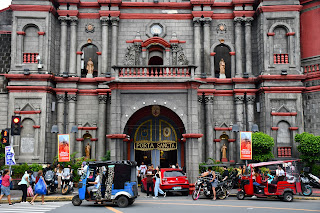



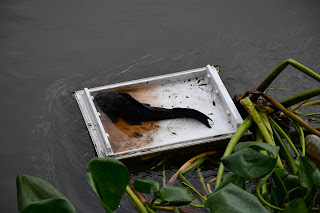
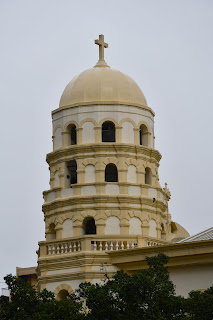
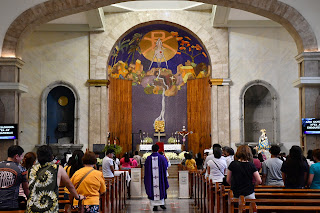
















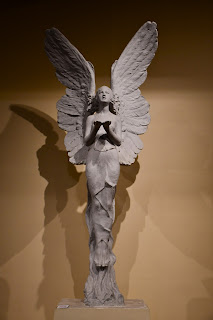









Comments
Post a Comment